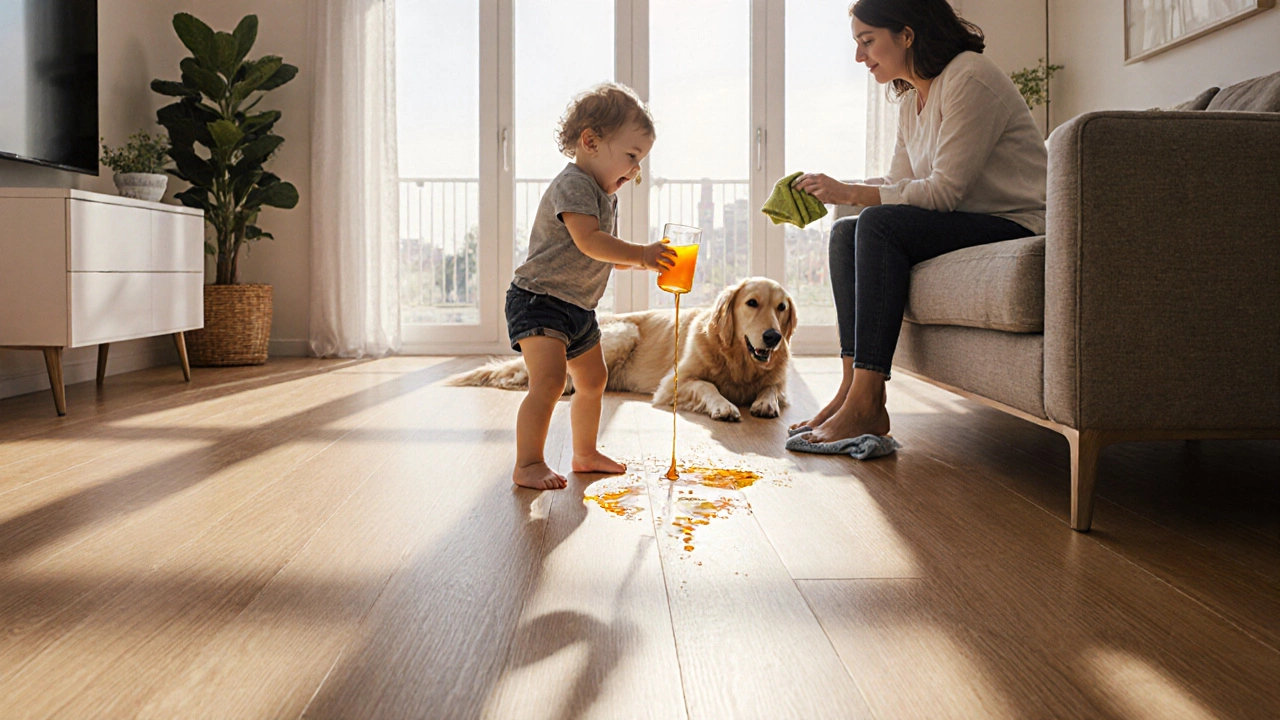Discover the most hassle‑free flooring options, from waterproof LVP to polished concrete, with cost, durability, and care tips for every home.
Low Maintenance Flooring: Easy‑Care Options for Every Home
When planning a floor that stays beautiful with minimal effort, low maintenance flooring, a category of floor coverings designed to resist wear, stains, and frequent upkeep. Also known as easy‑care flooring, it is a practical choice for busy families, pet owners, and anyone who wants more time for living, not cleaning.
One of the most common types under this umbrella is tile flooring, hard, non‑porous surfaces made from ceramic, porcelain, or natural stone. Tile encompasses durability, water resistance, and a wide design range, making it ideal for bathrooms and kitchens. Another popular option is laminate flooring, engineered boards that mimic wood or stone while offering a tough wear layer. Laminate requires only light sweeping and occasional damp mopping, and it resists scratches better than many hardwoods. Vinyl flooring, flexible sheets or planks with a protective top coat provides the same visual flexibility as tile or wood but with an even softer feel underfoot. Finally, engineered hardwood, layers of real wood veneer bonded to a stable core gives the warm look of classic hardwood while handling moisture changes better than solid planks.
Key Benefits That Tie These Choices Together
Low maintenance flooring encompasses four core benefits: resistance to stains, ease of cleaning, longevity, and design versatility. Tile flooring’s glazed surface prevents liquid from soaking in, so spills wipe away in seconds. Laminate’s wear layer protects against everyday dents, while vinyl’s seamless joints reduce dust traps. Engineered hardwood balances natural grain beauty with engineered stability, meaning it can survive under‑floor heating without warping. Together, these attributes enable homeowners to choose a floor that matches both lifestyle and aesthetic goals without the nightmare of constant upkeep.
When it comes to choosing the right product, consider the room’s traffic level, moisture exposure, and style preference. For high‑traffic areas like hallways, a high‑quality laminate with a 30‑mil wear layer will outlast most other options. In wet zones, porcelain tile offers the highest water resistance, while luxury vinyl plank (LVP) gives a wood‑look feel without the risk of swelling. If you love the warmth of real wood but worry about humidity, engineered hardwood combined with a matte finish will hide surface scratches and stay stable for years.
Maintenance routines vary by material, but the common thread is simplicity. Tile only needs a quick sweep and a mop with a pH‑neutral cleaner; laminate benefits from a dry‑cloth wipe followed by a damp mop (never oversaturate); vinyl can be cleaned with a mild floor detergent, and engineered hardwood should be swept daily and cleaned with a hardwood‑specific product once a month. By following these easy steps, you keep the floor looking fresh without spending hours on chores.
Beyond practical concerns, low maintenance flooring influences home resale value. Buyers appreciate surfaces that look new after years of use, and a well‑chosen floor can boost curb appeal and interior cohesion. Whether you opt for a sleek grey porcelain tile in the kitchen or a warm honey‑tone LVP in the living room, the right floor makes a room feel complete and effortlessly cared for.
Below you’ll find a curated collection of articles that dive deeper into each of these flooring families, compare costs, and share styling tips. From timeless design ideas to specific cleaning hacks, the posts are packed with actionable insights that help you pick, install, and enjoy the perfect low maintenance floor for your space.
